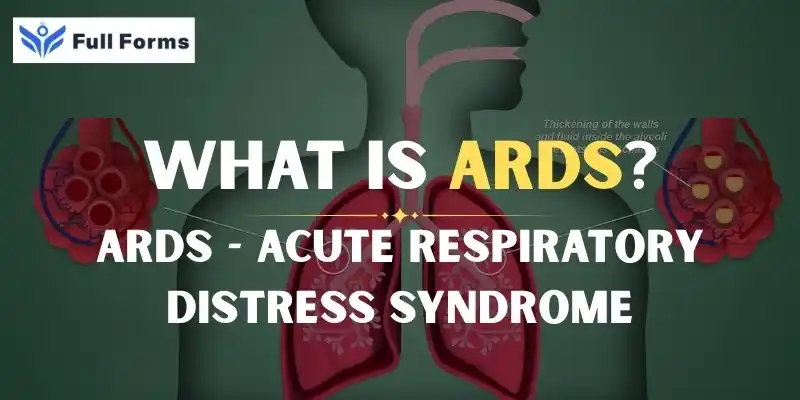Acute Respiratory Distress Syndrome
(ARDS)

Description
Acute Respiratory Distress Syndrome or Failure of Breathing
In normal breathing, the lungs take in oxygen and give out carbon dioxide. It is a simple act that does not require much thought. But what if there was suddenly a malfunction? That is what happens with Acute Respiratory "Distress" Syndrome — more accurately, Acute Respiratory Failure to describe this deadly condition.
What Is ARDS?
Acute Respiratory Distress Syndrome refers to a situation when fluid occupies the lungs and breathing becomes difficult. The fluid accumulates in small air sacs known as alveoli that are supposed to be filled with air. Therefore, the patient does not get enough oxygen intake as the vital organs of the body such as the brain and heart do not receive an adequate amount of oxygen they require.
It may develop within hours to days and in most cases, it develops in patients who are already critically ill or have sustained injuries.
What Causes ARDS?
ARDS is not a primary disease; it is a response to pathology occurring elsewhere in the body. Some of the more typical causes include:
- Pneumonia: The result of an infection of the lungs that can precipitate severe ARDS.
- Sepsis: When there is serious infection in the blood, it can lead to inflammation of all parts of the body and also affects the lungs.
- Trauma or injury: Major, particularly chest or head injuries may precipitate the development of ARDS.
- Inhalation injury: Lung damage might be caused by inhaling smoke or chemical fumes, or from a near-drowning accident.
- COVID-19 disease: Inflammation caused by COVID-19 in the lungs has led to ARDS in many patients with severe disease.
Symptoms of ARDS
It typically starts with trouble getting enough air. As it becomes more severe one may:
- Have rapid breathing or feel like they are suffocating
- The levels of oxygen in their blood are low
- Extreme fatigue or confusion
- Show blue skin, lips, or nails (signs of low oxygen)
- Have low blood pressure
It often needs emergency care at a hospital, and most times in the Intensive Care Unit (ICU).
How Do Doctors Find ARDS?
Doctors use different things to look for ARDS:
- Chest X-rays or CT scans to spot fluid in the lungs.
- Blood tests that show oxygen levels.
- Sounds of breathing checked with a stethoscope.
- Pulse oximeter or arterial blood gas exams to see how well oxygen is getting through the body.
Since ARDS looks like many other breathing problems, doctors will check for other conditions first.
There is no one pill that cures ARDS, but care by support while the patient gets better and breathes is what doctors do. This includes:
1. Oxygen Therapy
Supplemental oxygen may be delivered by mask or nasal cannula. In extreme cases, the patient will receive oxygen pushed into the lungs with a ventilator (breathing machine).
2. Fluids and Medication
Fluids need to be managed very carefully. Too much will worsen the lungs, and too little will lower blood pressure. The patient may also receive:
- Antibiotics (if there is infection)
- Sedatives or pain relievers
- Drugs to prevent blood clots, or against inflammation
3. Prone Positioning
Proning- i.e., laying the patient on his stomach improves oxygenation and has been found to be very useful in cases of severe patients, such as in ARDS due to COVID-19.
Some people get better all the way, just like that. The earlier the treatment starts, the better the chances of full recovery. For others, it takes weeks or even months to get over it and might be accompanied by; Weakness or tiredness, Scarring of the Lungs, Breathing Problems, Mental Health Issues like anxiety or depression due to long stays in hospitals. Life after ARDS is better with Pulmonary Rehabilitation (Breathing Exercises, Physical Therapy).
People who have chronic conditions (such as diabetes or heart disease)
Smokers and those with lung issues
Can ARDS Be Stopped Before It Starts?
Because other illnesses usually bring on ARDS, the best way to keep it from happening is by treating those sicknesses in their early stages and using common steps toward better health:
- Get shots (flu, lung sickness, COVID-19)
- Don’t smoke and keep away from bad fumes
- Control infections fast and right
- Put on safety gear if working in unsafe places
Final Words
Acute Respiratory Distress Syndrome is a critical condition that requires immediate and skilled management. Though it is an intimidating disease, people do get well͏. Early detection and proper management improve the prognosis of ARDS. Knowing its symptoms and reasons will surely help you or your loved one to seek appropriate medical attention in due time.
Your lungs work every second take care of them. And if you or anyone near you is having breathing problems do not wait. Seek medical attention. It can save a life.
